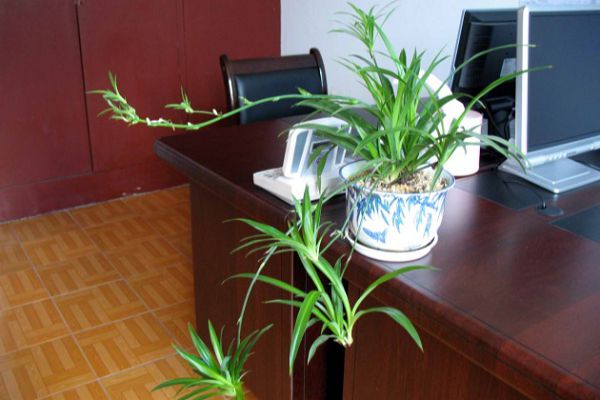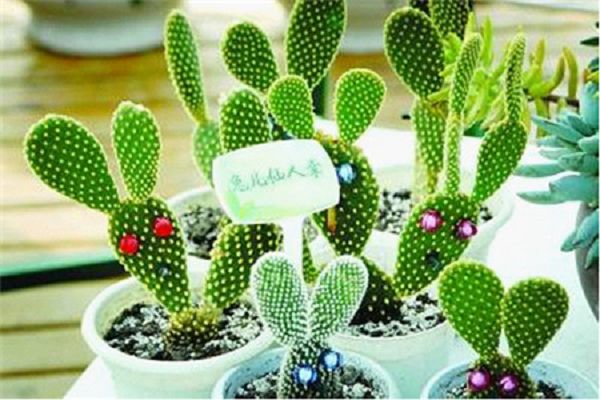Which flowers and plants are suitable for growing indoors?

In order to give full play to the function of flowers and plants in preventing environmental pollution and purifying the air, we should decide what kind of plants to plant and where to put them according to the habits or indoor functions of each kind of plants.
What are the flowers and plants suitable for growing indoors?
First, it can be selected according to the habits of flowers and plants
Oxygen spitting plants fresh air, recommended flowers and trees: Cymbidium, cactus plants.
Plants breathe differently. Some breathe in carbon dioxide and exhale oxygen, while others do the opposite. Such as cactus plants can exhale oxygen at night, in fresh air at the same time, can make indoor feel moist and mild, more suitable for placing in the bedroom; large pots of gentleman orchids can be placed in the hall, directly used to regulate the air of the living room.
Some plants can "disinfect and take drugs". Flowers and trees are recommended: orchid, green pineapple, tortoise back bamboo, rich bamboo, aloe, ivy.
Green pineapple, hanging orchid, tortoise back bamboo and other plants have the role of absorbing harmful gases, placed in the newly decorated new house, not only play a decorative role, but also conducive to health; evergreen ornamental plants such as rich bamboo all have the function of "disinfection".
Isolate computer electromagnetic radiation, recommend flowers and trees: cactus, cactus.
Cactus and other succulent plants native to tropical arid areas, the stomata on their succulent stems are closed during the day and open at night, so they absorb carbon dioxide and release oxygen at night, so they have the function of increasing fresh air and negative ions. In addition, it also has a good inhibitory effect on bacteria in the air.
Second, it can be arranged according to the function of the room.
Toilet: should choose to bear Yin wet, the leaf surface is soft, especially want hairless, thorn-free plant, such as fern, evergreen, bamboo and so on.
Kitchen: because it is easy to produce lampblack, the plants placed should also have better anti-pollution ability, such as aloe, evergreen and so on. If you choose vegetables and fruit materials to make flower arrangement, it is not only in harmony with the kitchen environment, but also interesting.
III. Matters needing attention in flower selection
Many people like to grow flowers indoors to improve and beautify the indoor environment, but if they choose improperly, it will cause indoor pollution. Therefore, attention should be paid to:
1. Select the best varieties indoor to choose evergreen flowers and trees or varieties that can absorb toxic gases, such as hanging orchid, asparagus, evergreen, cactus, tortoise back bamboo, ivy and so on.
2, the bedroom flowers should be fastidious, this is because during the day flowers release oxygen and absorb carbon dioxide during photosynthesis; but at night, flowers do not carry out photosynthesis, not only emitting carbon dioxide, but also absorbing oxygen. Therefore, in the bedroom, it is best to put less or no flowers at night, in order to avoid competing for oxygen with people, affecting health.
3. Immortal plants have thorns and are not suitable for use in the bedroom, and they must be kept away from the reach of children to prevent them from being stabbed.
4. Avoid flowers and plants that are not suitable for indoor planting (the above strategy) and avoid cancer-promoting flowers and plants. 52 species of cancer-promoting flowers: Iris (swallow flower), red impatiens, iron begonia, broad-leaf kiwifruit, bitter almond, mandala, stone millet, yellow clematis, cardinal coral, variable leaf wood, fine leaf variable leaf wood, bee kidney banyan, stone mountain Croton, hairy fruit Croton, Croton bean, unicorn crown, cat eye grass, Ze lacquer, kansui, continued Suizi, alpine snow, thousand grass, red back sweet-scented osmanthus, cocktail wood, multi-lobed jatropha, Sapium sebiferum, Sapium sebiferum, Sapium sebiferum Round-leaf Sapium sebiferum, paulownia, paulownia, Huo Jiele, Daphne genkwa, incense, Stellera chamaejasme, Daphne genkwa, Euphorbia angustifolia, Euphorbia officinalis, Euphorbia angustifolia, Euphorbia angustifolia, Fructus Achyranthes, Forsythia suspensa, Shegan, Silver back Dryopteris, Golden Fruit olive, Sanshui, scissors, hard pod tree, Hainan Trichosanthes, Achyranthes bidentata.
- Prev

An inventory of indoor plants and flowers suitable for water cultivation
An inventory of indoor plants and flowers suitable for water cultivation
- Next

These flowers must not be caught in the rain, or they will hurt their roots.
These flowers must not be caught in the rain, or they will hurt their roots.
Related
- What if the leaves of potted flowers turn yellow?
- Florescence Control of several Flowers
- Anti-freezing technology and post-freezing nursing technology of flowers
- What is the classification of flowers? What are the common methods of flower classification?
- Prevention and control of alkali and acid damage of flowers in courtyard
- Technology of Anti-freezing and restoring growth of Flower seedlings in greenhouse and greenhouse
- How does flower fertilization not hurt the root? Fertilization technology of flowers
- Key points of disinfection in flower greenhouse
- Several pesticides that are banned or used cautiously in flowers
- How to fertilize the flowers that watch the leaves?

